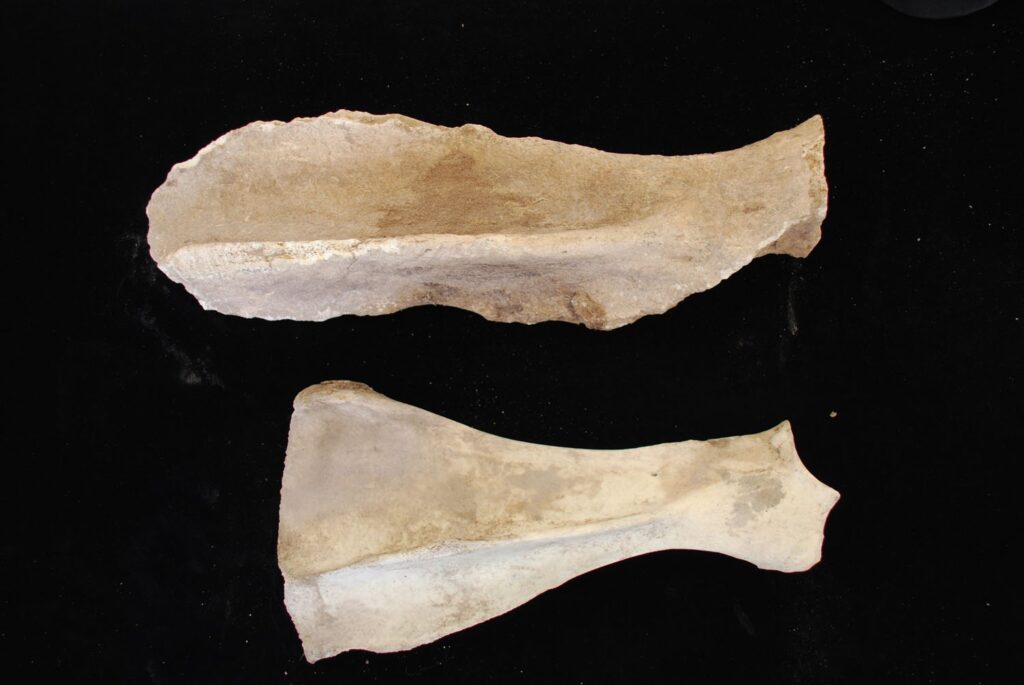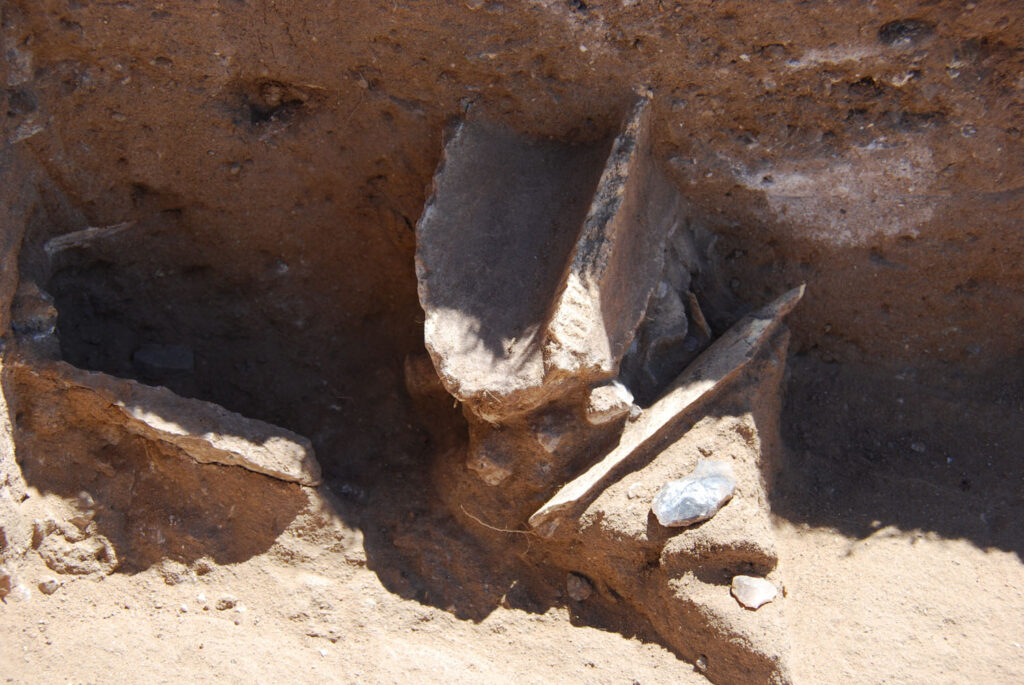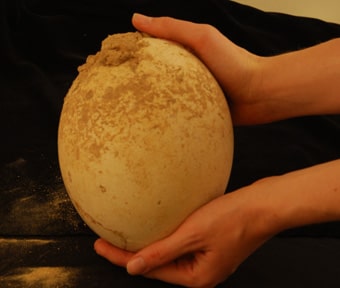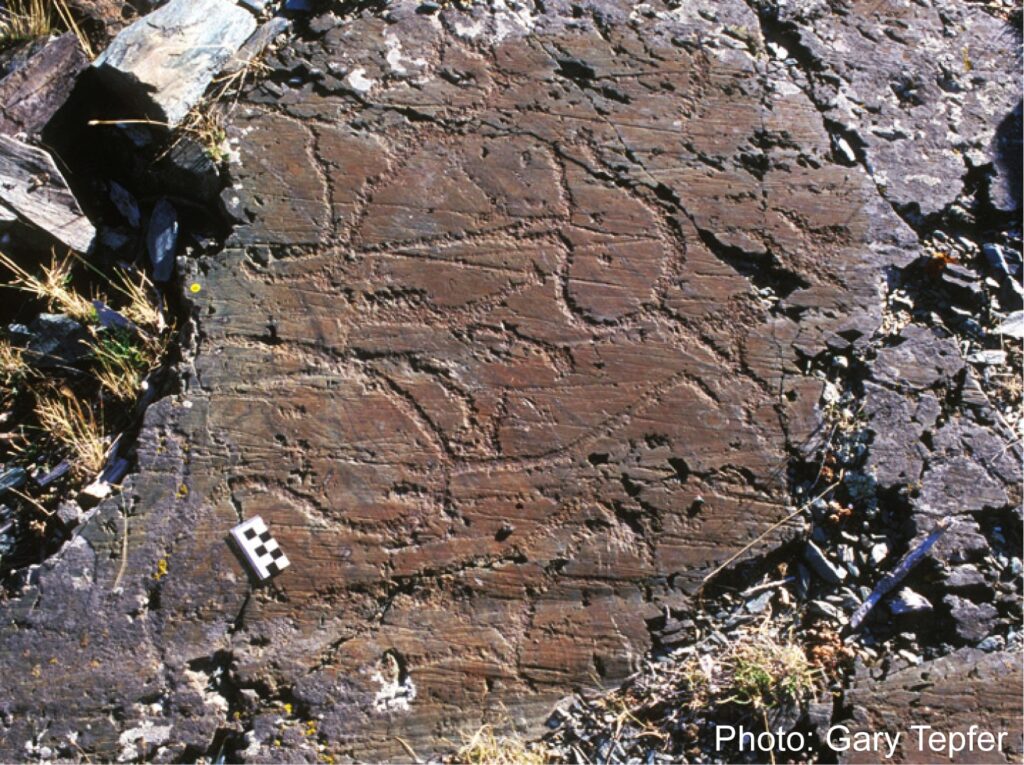Theme 4/
Ostrich Ecology and Extinction
Summary/Findings
Many large herbivores went extinct at the end of the last Ice Age or the “Pleistocene.” This is referred to as the period of “megafaunal extinctions.” In North America, species like horses, mammoth, giant sloths, and camels disappeared. In Mongolia, horses and camels remained but other species were lost, including mammoth, woolly rhinoceros (OES, Fig. 1 – Rhino), giant elk, hyenas (OES, Fig. 2, Hyena), and a species of giant northern-dwelling ostrich (OES, Fig. 3 – Petroglyph). We do not have any fossils of ostriches from the Pleistocene, but researchers have found numerous fragments and beads of ostrich eggshell (OES, Fig. 4 – Beads) and complete eggs (OES, Fig. 5 – Eggs) were uncovered by researchers in China during the early 20th century. The eggs were much larger and thicker than modern ostrich eggs and suggest that the birds themselves may have been much larger than modern African ostriches.
For a long time, people assumed that ostriches went extinct during the Last Glacial Maximum – a period at the end of the Ice Age that was extremely cold and dry. However, our work dating ostrich eggshells from archaeological sites showed that ostriches actually survived in the Gobi Desert as recently as 8000 years ago (Janz, Elston, Burr 2009; Janz, Feathers, Burr 2015). Recent chemical analysis of eggshell has further shown that ostriches once ranged as far north as the Lake Baikal region of Siberia! (Routledge 2020). We believe that understanding why the home range of ostriches shrank after the last Ice Age, and what was happening leading up to their extinction, can tell us a lot about Pleistocene megafaunal extinctions, including interrelated environmental changes, and the potential role of humans.
Publications:
- 2015 Odsuren, D., D. Bukchuluun, L. Janz. Preliminary results of Neolithic research conducted in eastern Mongolia. Studia Archaeologica 35: 72-96. (in Mongolian with English abstract)
- 2015 Janz, L., J. Feathers, and G. S. Burr. Dating surface assemblages using pottery and eggshell: assessing radiocarbon and luminescence techniques in Northeast Asia. Journal of Archaeological Science 57: 119-129. DOI 10.1016/j.jas.2015.02.006
- 2009 Janz, L., R. G. Elston, G. S. Burr. Dating Northeast Asian surface assemblages with ostrich eggshell: implications for palaeoecology and extirpation. Journal of Archaeological Science 36: 1982-1989. DOI 10.1016/j.jas.2009.05.012












